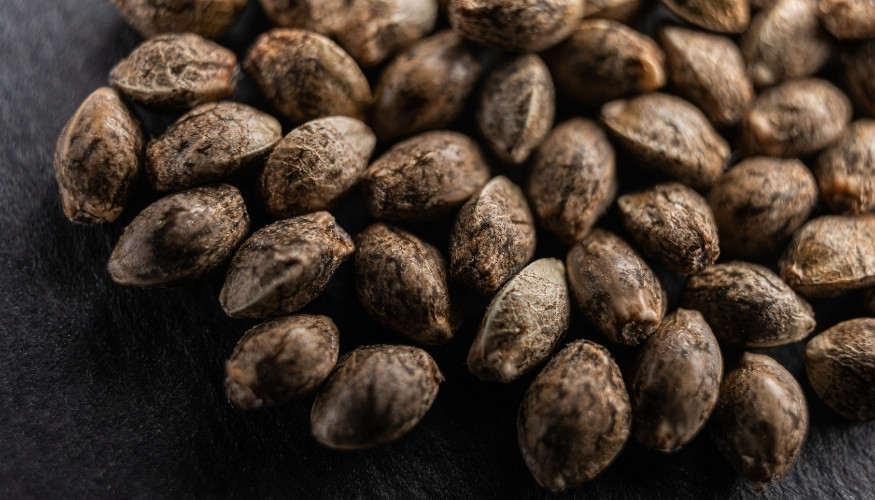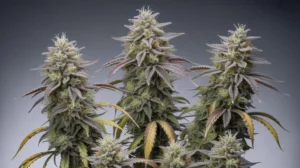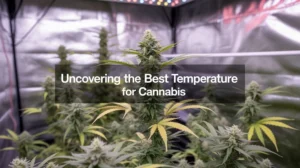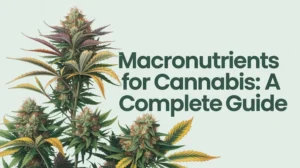What Is the Success Rate of Feminized Seeds?

Growing cannabis is both a science and an art, and one of the key considerations for growers—whether beginners or seasoned experts—is choosing the right seeds. One of the most popular options in cannabis cultivation is feminized seeds. These seeds are specifically bred to produce female plants, the ones that bear the coveted buds packed with cannabinoids and terpenes. But what is the actual success rate of feminized seeds, and why are they often favored over regular seeds? Let’s explore the ins and outs of feminized seeds, the factors influencing their success, and what growers can do to maximize their yield.
Understanding Feminized Seeds: What Are They?
Before diving into the success rates, it’s crucial to understand what feminized seeds are and why they’re a game-changer in the cannabis cultivation world. Cannabis plants are dioecious, meaning they can be either male or female. Female plants produce the buds that are harvested and consumed, while male plants only produce pollen sacs. For growers, male plants are typically undesirable because they can pollinate females, leading to seed production rather than potent, seedless buds (sinsemilla).
Feminized seeds are produced through a process that alters the natural reproductive cycle of cannabis plants. By using methods such as colloidal silver or silver thiosulfate to stress a female plant, breeders can induce it to produce pollen, which is then used to fertilize another female. Since there are no male chromosomes involved in this process, the resulting seeds are almost always female. This ensures that the seeds will grow into bud-bearing plants, making the growing process more predictable and rewarding.
Why Use Feminized Seeds?
Many growers choose feminized seeds to eliminate the guesswork of sexing plants. With regular cannabis seeds, there’s roughly a 50 percent chance that each seed will produce a male plant, which has to be removed to prevent pollination and seed production in females. If a significant number of plants turn out male, this can be a waste of time, effort, and resources.
Feminized seeds, however, guarantee that virtually all the plants will be female. This maximizes the grow space and resources, allowing growers to focus their efforts on cultivating high-quality buds. Additionally, feminized seeds simplify the growing process for beginners who might struggle with identifying and removing male plants.
The Success Rate of Feminized Seeds: What To Expect
Now, onto the big question: What is the success rate of feminized seeds? Typically, the success rate of feminized seeds can be as high as 99 percent. However, this rate depends on several factors, including the quality of the seeds, the skill of the grower, and the growing conditions provided. Let’s break down these aspects:
1. Quality of Seeds: Genetics Matter
The success rate of feminized seeds largely hinges on their genetic quality. When purchasing seeds from reputable breeders or seed banks, growers can expect a nearly perfect success rate of producing female plants. High-quality feminized seeds are bred with care to ensure genetic stability and minimize the chance of hermaphroditism (the plant developing both male and female characteristics).
However, not all feminized seeds are created equal. Seeds from unreliable sources or those that have not been properly stabilized might have a lower success rate, potentially resulting in plants that either turn male or display hermaphroditic traits. This can be detrimental, as a hermaphroditic plant can still pollinate the female plants, leading to seed production instead of quality buds.
2. Hermaphroditism: The Hidden Risk
Despite the high success rates, there is always a slim possibility that feminized seeds may produce hermaphroditic plants, commonly referred to as “hermies.” Hermaphroditism can occur due to various factors, including stress (e.g., light leaks during the dark period, extreme temperatures, or physical damage). When a feminized seed becomes a hermaphrodite, it can self-pollinate and fertilize other female plants, reducing the quality of the final harvest.
Quality breeders aim to minimize the likelihood of hermaphroditism through careful selection and breeding practices. However, the risk can never be entirely eliminated, especially if the grower does not provide optimal growing conditions. To mitigate this risk, growers should maintain a stress-free environment for their plants, avoiding factors that could trigger stress responses.
3. Growing Conditions: The Key to Success
The success rate of feminized seeds isn’t just about the seeds themselves—it’s also heavily influenced by the conditions in which they are grown. Proper lighting, temperature, humidity, soil quality, and nutrient availability all play critical roles in ensuring that feminized seeds grow into healthy, female plants.
- Lighting: Cannabis plants need an adequate light schedule to thrive. During the vegetative stage, a common light cycle is 18 hours of light and 6 hours of darkness. For the flowering stage, switching to 12 hours of light and 12 hours of darkness is standard. Light leaks during the dark period of flowering can stress plants and potentially cause hermaphroditism.
- Temperature and Humidity: Cannabis plants prefer a stable environment. High temperatures (above 85°F) or low temperatures (below 60°F) can stress the plants. Similarly, high humidity during the flowering stage can lead to mold and mildew, while low humidity can cause the plants to become more susceptible to pests.
- Soil and Nutrients: The medium in which cannabis is grown affects its growth and overall health. Using high-quality soil or a proper hydroponic system with balanced nutrients can significantly enhance the plant’s development. Too much or too little of certain nutrients can stress the plant, affecting its ability to flower properly.
By providing optimal growing conditions, growers can maximize the success rate of feminized seeds and reduce the risk of hermaphroditism or other issues.
4. Genetic Diversity and Phenotypes
Even when feminized seeds are successfully grown into female plants, each plant might express different phenotypes due to genetic diversity. This means that while all the plants will be female, they may have slight variations in characteristics such as height, bud density, flavor, aroma, and cannabinoid content. While this doesn’t affect the “success rate” in terms of producing female plants, it does introduce variability in the final product.
5. Comparing Feminized Seeds to Regular and Autoflower Seeds
It’s helpful to compare feminized seeds to other types of cannabis seeds to put their success rate into perspective:
- Regular Seeds: Regular seeds have a roughly 50 percent chance of being male, which significantly reduces the number of female plants per batch. Additionally, growers must spend time identifying and removing males, increasing the workload and reducing the efficiency of the grow operation.
- Autoflower Seeds: Autoflower seeds, which begin to flower based on age rather than light cycles, can also be feminized. The success rate of feminized autoflower seeds is similar to that of regular feminized seeds, with most producing female plants. However, autoflowers are generally more sensitive to stress, so providing optimal conditions is crucial.

Tips for Maximizing the Success Rate of Feminized Seeds
To get the most out of feminized seeds and achieve close to a 99 percent success rate, consider the following tips:
- Purchase from Reputable Sources: Always buy seeds from well-known, reputable breeders or seed banks. This ensures that the seeds have been produced through proper breeding techniques and have stable genetics, reducing the risk of hermaphroditism.
- Provide Optimal Growing Conditions: Maintain a stable environment with proper lighting, temperature, and humidity. Use high-quality soil or a well-balanced hydroponic system to ensure your plants get the nutrients they need.
- Avoid Stressing the Plants: Stress is a leading cause of hermaphroditism. Avoid practices that could stress the plants, such as inconsistent watering, extreme temperature fluctuations, light leaks during the dark cycle, and physical damage to the plants.
- Monitor Your Plants Regularly: Even with feminized seeds, it’s important to regularly inspect plants for signs of hermaphroditism or other issues. Early detection can prevent widespread problems and protect your harvest.
- Keep a Consistent Light Schedule: Especially during the flowering phase, ensure your plants have a strict 12/12 light cycle without interruptions. Light leaks can stress the plants and increase the risk of hermaphroditism.
- Use Training Techniques Cautiously: Low-stress training (LST) is generally safe for feminized plants, but high-stress techniques such as topping or pruning should be used with caution to avoid inducing stress.
Conclusion
Feminized seeds offer an impressive success rate, with nearly 99 percent of them producing female plants when grown under optimal conditions. By eliminating the guesswork of sexing plants, they streamline the cultivation process and maximize the efficiency of grow spaces. However, the success rate can vary based on the quality of the seeds, the care provided by the grower, and the growing environment. By selecting high-quality seeds, minimizing plant stress, and maintaining optimal conditions, growers can achieve an almost guaranteed female yield, resulting in a bountiful and rewarding harvest.
Ready to get your garden started? Explore our premium collection of feminized cannabis seeds today to ensure a successful, bountiful harvest every time!
Common FAQs About Feminized Seeds
1. Can feminized seeds produce male plants?
While feminized seeds are designed to produce female plants, there is a very slim chance (less than 1%) that a plant could exhibit male characteristics. This usually occurs due to genetic instability or extreme stress conditions.
2. Do feminized seeds yield less than regular seeds?
No, feminized seeds do not inherently yield less than regular seeds. In fact, because they guarantee female plants, growers can focus all their resources on maximizing bud production, often resulting in higher overall yields.
3. Are feminized seeds more prone to hermaphroditism?
High-quality feminized seeds from reputable breeders are not more prone to hermaphroditism than regular seeds. However, poor-quality feminized seeds or those grown under stressful conditions may be more likely to develop hermaphroditic traits.
4. How can I tell if a plant is turning hermaphroditic?
Signs of hermaphroditism include the appearance of pollen sacs (which resemble small bananas or clusters of balls) alongside buds. Early detection and removal of hermaphroditic plants can help prevent pollination and preserve the quality of the harvest.
5. Can I clone feminized plants?
Yes, you can clone feminized plants. The clones will inherit the same genetics as the mother plant, including its female sex. However, the clones will also inherit any genetic weaknesses or susceptibility to stress.
Suggested Articles
;)
;)
;)




 18 Dec 2025
18 Dec 2025  5 min read
5 min read


 September 18, 2024
September 18, 2024 


RESPONSES (0)
No responses yet. Be the first to respond!